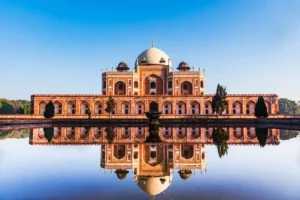GS1 – Art & Culture

Context
The recent inclusion of the Maratha Military Landscapes in the UNESCO World Heritage List signifies an important stride towards acknowledging and reclaiming India’s vast and diverse historical heritage. This move is part of a wider initiative aimed at recognising forgotten heroes, reviving neglected historical sites, and celebrating the civilizational accomplishments that were either marginalized under colonial rule or ignored in post-independence India.
Decolonising India’s Heritage Narrative
India’s civilizational legacy spans millennia, yet its historical discourse continues to carry colonial biases.
- Colonial historians focused on tales of conquest and domination, glorifying invaders while diminishing the roles of indigenous rulers, philosophers, and freedom fighters.
- Unfortunately, this narrative saw little revision after 1947, allowing colonial constructs to persist in the way India recognises its monuments and heroes.
Policy Shortcomings in Monument Recognition
- Selective Recognition of Monuments
- Inconsistencies: Sites like the graves of Afzal Khan’s wives in Bijapur are designated as Monuments of National Importance despite lacking cultural or patriotic significance.
- Neglect: In contrast, the samadhi of Maharani Tarabai Bhonsle, a Maratha ruler who fiercely resisted Mughal dominance for three decades, remains neglected in Satara.
- Ignored Victories and Historical Occupations
- Baba Baghel Singh, who seized Delhi in 1783 and constructed seven gurdwaras, is missing from official records.
- The Marathas’ control over Delhi (1757–1803), including their occupation of the Red Fort, is not acknowledged in the site’s exhibits.
- Historical Accuracy: The British took control of Delhi from the Marathas—not the Mughals—a fact unmentioned in existing public narratives.
- Overlooked Revolutionary Sites
- Disparity: A British soldier’s grave from 1857 has received monument status, while the Kali Paltan Augharnath Temple in Meerut—a pivotal site for Indian revolutionaries and Punjab Regiment soldiers—has not.
- Neglect of Dalit and Tribal Contributions
- Ambedkar Sites: Significant places associated with Dr. B.R. Ambedkar, including his first school in Satara and Sankalp Bhumi in Vadodara, are still awaiting official recognition.
- Tribal History: The Mangarh massacre site in Rajasthan, where over 1,500 Bhil tribals were killed in 1913, remains unlisted.
- Ignoring Spiritual and Philosophical Centres
- Adi Shankaracharya’s Birthplace: Despite a recommendation by the Governor of Kerala, Kalady—the birthplace of Adi Shankaracharya—has not been granted national monument status.
- Arbitrary and Illogical Listings
- Low-Relevance Sites: Sites such as Tota-Maina Ki Kabr and Babur Ka Bagicha have been granted protected status despite questionable historical value.
- Neglected Temples: Ancient Hindu temples in Kashmir—including Martand, Parihaspore, and Harwan—have neither been declared World Heritage Sites nor granted national protection.
Way Forward
- Comprehensive Review: Reassess existing Monuments of National Importance and remove entries that lack historical relevance.
- Inclusive Recommendations: Propose new heritage sites that reflect India’s civilizational, revolutionary, and spiritual legacy.
- Mainstream Marginalised Histories: Integrate tribal, Dalit, and regional contributions into the official heritage framework.
- Balanced Representation: Ensure fair geographical representation, with a focus on underrepresented areas like the North-East and Jammu & Kashmir.




